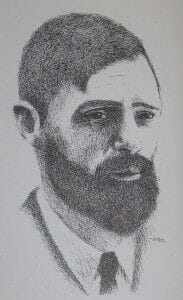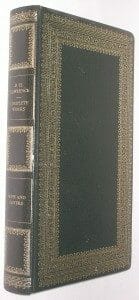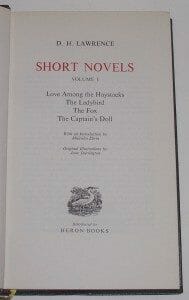The Works of DH Lawrence
D H Lawrence (1885-1930), was an astonishingly versatile and prolific writer, being a novelist, storywriter, critic, poet and painter, and one of the greatest figures in 20th-century English literature.

His list of publications runs to well over 100 titles, a remarkable tally for a man who died in his mid-Forties. His poetry is of a high order, “Snake” and “How Beastly the Bourgeoisie is” are probably his most anthologized poems, and his plays are still occasionally performed and not merely as curiosities. However it is as a prose writer that he is best known, and rightly so, he was a master of all forms of fiction, equally at home with the short tale and novella as with the full length novel. It is these works that are most often read today, and form the core of his remarkable body of writing.
David Herbert Lawrence was born on September 11th 1885, the fourth child of miner Arthur and teacher Lydia who constantly criticised her husband’s heavy drinking and bad language. The young David observed well, and the couple’s difficult relationship is explored in the magnificent Sons and Lovers (1913), and his play A Collier’s Friday Night.

Lawrence wrote some of his most thoughtful, angry, and beautiful books after the First World War, most notably Women in Love (1920), which is something of a sequel to The Rainbow (1915). In 1921 came several essays and travel pieces for various magazines, and journals. 1922 saw the publication of Aaron’s Rod, which show the influence of Nietzsche, followed by his finest collection of short stories, England My England. The following year saw publication of his most disturbing novel, Kangaroo (1923), which in essence is an essay on the power, and appeal of fascism. He also published a collection of wonderful poetry, Birds, Beasts and Flowers. The Plumed Serpent (1926), written while living in the US sate of New Mexico, was a vivid evocation of Mexico and its ancient Aztec religion. The Man Who Died (1929), is a bold story of Christ’s Resurrection.

His collected works, among other things, represent an extended reflection upon the dehumanising effects of modernity and industrialisation. In them, some of the issues Lawrence explores are emotional health, vitality, spontaneity and instinct. For a summary of the published collected editions of D H Lawrence just click on the image below.

Lawrence’s opinions earned him many enemies and he endured official persecution, censorship, and misrepresentation of his creative work throughout the second half of his life, much of which he spent in a voluntary exile. At the time of his death, his public reputation was that of a pornographer who had wasted his considerable talents. E. M. Forster, in an obituary notice, challenged this widely held view, describing him as, “The greatest imaginative novelist of our generation.”


